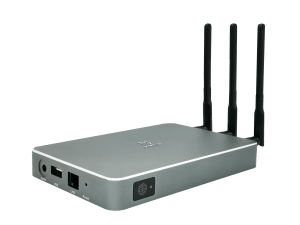Internet of Everything is the most popular direction of science and technology, and how to connect tens of thousands of intelligent devices together has become an urgent problem. For companies, factories or families, it’s obviously unrealistic to equip hundreds of smart devices with 4G communication cards. If all of them are connected to the router, the mounting capacity of the router will have problems. Therefore, the key point is to solve the “last mile” from network to equipment.

Suzhou BiJie Network Co., Ltd is a high-tech research and development enterprise focusing on the development of wireless display and interactive. It is committed to provide leading wireless display and interactive product and solution of smart meeting room and classroom. The company won the title of “National High-tech Enterprise”, “Jiangsu Province Private Technology Enterprise”, “Double Soft Enterprise” and “Chengcheng Science and Technology Leading Enterprise”.
BiJie makes a wireless display and interactive device for education and business. We want to make it easy for people to share data and ideas without cables. So far, we have generated hundreds of customers, have sold tens of thousands of devices, and our software has been running on millions of users.
1. Wireless and wired have their own advantages
Although it has developed for nearly 20 years, the advantages and disadvantages of wireless and cable are still very obvious, like the relationship between fixed telephone and portable telephone in that year: portable telephone is more convenient, but its adaptability in some occasions will be very poor, and its reliability and stability are far less than that of fixed telephone. But the trend of wireless has been put in front of us. With the extremely low cost of construction and maintenance, and the incomparable convenience, it can be said that as long as the reliability problem is solved, wireless will replace wired in an all-round way.
2.The development of wireless technology
Since BiJie establishment, it has been working as a wireless display. It is safe to use and has a large capacity. It is widely used in daily communication transmission.
3. Intelligent manufacturing and industrial digital wireless
Now, everyone is talking about intelligent manufacturing, or industry 4.0. For small and medium-sized enterprises, the possibility of using intelligent manufacturing to directly realize process control is not high, because for them, order is the first place, and production capacity, output or automation cannot be the most concerned point.
The problem of intelligent manufacturing is that its reproducibility is limited. Even different production lines of the same product need deep customization, and there is no possibility of replication. Therefore, intelligent manufacturing is often used by super large factories, and only those traditional industrial control companies, such as Philips and Siemens, are involved in these matters.
When it comes to industrial digital wireless, Cao Yiqin said he is optimistic about this field. First of all, as discussed above, for small and medium-sized enterprises, the possibility of intelligent manufacturing directly realizing process control is not high, and small and medium-sized enterprises are more willing to invest in digital transformation or production environment monitoring.
Second, unlike intelligent manufacturing, industrial digitalization is similar, that is to say, success in one scenario can be copied to multiple scenarios. Third, when digital technology is combined with wireless technology, it will bring great flexibility. In the back-end market, wireless technology represents non-invasive installation, reducing costs and improving convenience.